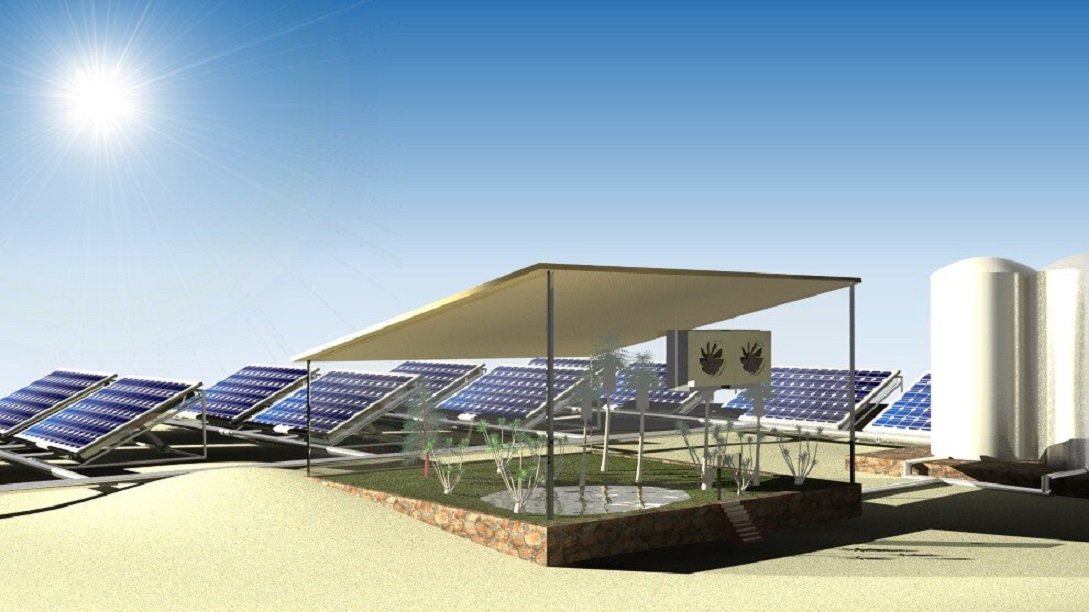Scientists continuously attempt to devise solutions to the wide range of problems the world is facing. One of the problems is the fact that a considerable part of the world does not have access to sufficient or clean water and energy.
To mitigate this issue, a group of researchers has recently developed a solar-driven system that can grow crops in arid areas by pulling water vapor from the air utilizing green energy that would have been wasted.

Image Credit: Anton Petrus via Shutterstock / HDR tune by Universal-Sci
The Saudi Arabia-based team dubbed their system WEC2P. It is made out of a solar photovoltaic panel installed on top of a layer of hydrogel that is placed on top of a big metal box to collect and condense water.
In a previous study, senior author Dr. Peng Wang and his colleagues produced the aforementioned hydrogel, which can efficiently capture water vapor from ambient air and release the water content when heated.
The scientists utilized waste heat from solar panels while they were generating electricity. The heat then drives absorbed water out of the hydrogel. The lower placed metal box then gathers the vapor and condenses it into water.

An impression of the WEC2P system deployed in an arid region - (Image Credit: Renyuan Li)
In addition, the recently developed hydrogel can improve the efficiency of solar panels by almost 10 percent simply by capturing the heat and reducing the solar panels' temperature.
EXPERIMENT
The researchers put their WEC2P to the test by undertaking a plant-growing experiment in Saudi Arabia for two weeks in the month of June when temperatures were exceedingly high.
They managed to irrigate 60 water spinach seedlings put in a plastic plant-growing box solely using the water that was gathered from the air by the device.
The solar panel, which was roughly the size of the top of a student desk, generated 1,519 watt-hours of power over the course of the experiment. In addition, 57 out of 60 water spinach seeds sprouted and developed to a height of 18 cm. Approximately 2 liters of water were condensed from the hydrogel during the two-week timeframe.

The plant growing box - (Image Credit: Renyuan Li)
Wang stated in a press release that the team's goal is to develop an integrated system of wat, food, and clean energy production.
The following step for the researchers is to develop a superior hydrogel that can absorb more water from the air in order to transform the proof-of-concept design into a real product.
The team published their work in the science journal: Cell Reports Physical Science, listed below. Be sure to check it out for more details about the design.






No comments:
Post a Comment